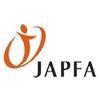Explore all the information on
Swine health
Pig diseases can be caused by bacteria, viruses, protozoa, nutritional deficiencies, poisonous substances, internal and external parasites.
Bacterial diseases include swine erysipelas, swine dysentery, infectious poly-arthritis etc. Viral and mycoplasma diseases include African swine fever, swine influenza, enzootic pneumonia of pigs, vesicular exanthema of swine, transmissible gastroenteritis etc. Helminthiasis as a health problem in pigs is mainly caused by worms like the lungworm, ascaris worm etc. Nutritional diseases include piglet anemia, parakeratosis etc. External parasitic infections include mange, lice, jiggers etc.
How to tell that a pig is in bad health:
General signs: dullness, loss of appetite, labored or rapid breathing, sudden deaths, loss of weight, low weight gain and fever usually manifested by shivering of the pig.
Signs expressed on the skin: reddening of the skin or skin discoloration, loss of hair and hardening of some parts of the skin, itching and cracking of the skin.
Other signs: lameness, cough, abnormal nasal discharges, diarrhea with a putrid smell, abnormal content and color of feces and abortions.
Background Staphylococcus aureus is an important cause of nosocomial and community-acquired human disease, and methicillin-resistant S. aureus (MRSA) is associated with increased morbidity, mortality and costs [1]. During the last decade, particular clones of MRSA called livestock-associated MRSA (LA-MRSA), due to their ability to colonize and persist in livestock, has emerged in most European countries [2]. The most widespread LA-MRSA in Europe and Northern America belongs to...
Comments : 0
Recommendations: 0
Introduction Colibacillosis is generally defined the infection with Escherichia coli characterized by many clinical forms. E. coli is a gram negative peritrichously flagellated bacteria belonging to the family Enterobatteriaceae and is the causative agent of a wide range of diseases in pigs, including neonatal diarrhoea, post-weaning diarrhoea (PWD), oedema disease (ED), septicaemia, polyserositis, coliform mastitis (CM) and urinary tract infection (UTI) (Fairbrother and Gyles,...
Comments : 0
Recommendations: 0


A Vietnamese study showed a lower bioavailability for methionine hydroxy analog calcium salt relative to MetAMINO® in starter pigs
Suggested link
Introduction The “Five Freedoms” (FAWC, 1993) are used widely as a framework for the assessment of animal welfare and the basis of much legislation for animal protection. Whilst not all Freedoms receive universal agreement, “Freedom from pain, injury and disease” is accepted as important by all stakeholders. Pain can be defined as “an unpleasant sensory and emotional experience associated with actual or potential tissue damage” (IASP, 1979)....
Comments : 0
Recommendations: 0
Ascaris suum is currently the only parasitic worm that is still highly prevalent in modern intensive pig production systems. However, due to the subclinical nature of the disease, ascariasis often remains undiagnosed, creating a lack of information regarding the worm-status of a farm, which ultimately makes it difficult for the farmers and the veterinarians to evaluate the applied deworming programs. In recent years, our group has developed and evaluated a serological test that can be used...
Comments : 0
Recommendations: 0


Effects of fermentation products of <i> Ganoderma lucidum </i> on growth performance and immunocompetence in weanling pigs
Suggested link
Introduction Vulvar discharges are related to reproductive tract infections that can lead to decreased sow fertility and other impairments in zootechnical indices, which reduces profitability 1,2,3 . However, knowledge about metrite causative agents in sows is still very superficial. Staphylococcus hyicus – a Gram-positive, coagulase variable, facultative anaerobic, catalase-positive, non-hemolytic, non-motile bacteria - may be able to cause metritis in...
Comments : 0
Recommendations: 0
One of the most pressing problems that has attracted considerable publicity in the last few years is the prospect of widespread multidrug resistance leading to a breakdown in human healthcare systems throughout the world. The O’Neil report (O’Neil et al 2016), estimates “that by 2050, 10 million lives a year and a cumulative 100 trillion USD of economic output are at risk due to the rise of drug- resistant infections”. The O’Neil report recommends a...
Comments : 0
Recommendations: 0
Animal emotions – and what about the pig? With some notable exceptions Darwin’s 1872 book on expressions of emotions in man and humans, ‘feelings’ or emotions have historically been viewed as non-scientific and not a subject fitting for scientific enquiry. However, during the last decades we have seen a resurrection of scientific interest in the field of mechanisms of emotion, not at least because of the increasing prevalence of...
Comments : 0
Recommendations: 0
Market analysis, swine exclusive exposition, technical updates, great food and networking are the highlights of the event that will take place September 7-9, 2022 in the United States.
A large event for the Americas, United Pork...
Comments : 0
Recommendations: 0
1. Introduction With 1766–1768 nucleotides, porcine circovirus type 2 (PCV2) is the smallest genomic panzootic associated virus among the circular single-stranded DNA (ssDNA) viruses hitherto. These ssDNA viruses are remarkably understudied, and only recently have researchers begun to study these viruses due to the advent of next-generation sequencing in birds, fish, mammals, and even humans [1,2]. The small genome of PCV2 encodes at least nine different transcripts...
Comments : 0
Recommendations: 1
Introduction African swine fever (ASF) is one of the most complex infectious swine diseases. Its notification to the World Organization for Animal Health (OIE) is mandatory due to the high mortality it causes, its efficient transmission rate and the great sanitary and socioeconomic impact that it produces on international trade of pigs and pork products. The African swine fever virus (ASFV) is a large, enveloped double-stranded DNA virus, which is the only...
Comments : 0
Recommendations: 0
Introduction African Swine Fever (ASF) is a devastating highly contagious disease affecting suids. It is caused by a big complex virus, the African swine fever virus (ASFV), that can spread very rapidly within the pig populations by direct or indirect contact. This virus can also become endemic in feral or wild suids, and the transmission cycles existing between these animals and the Ornithodorus spp. ticks, the biological vector, complicate control and...
Comments : 0
Recommendations: 0
Joe Crenshaw, Senior Director for Tech Services at APC, talks about plasma biosafety and efficient pig production....
Comments : 0
Recommendations: 0


A Vietnamese study showed a lower bioavailability for methionine hydroxy analog calcium salt relative to MetAMINO® in starter pigs
Suggested link
Introduction Porcine Reproductive and Respiratory Syndrome (PRRS) is the most relevant infectious disease in the swine industry. PRRS virus (PRRSv) live inoculation has been used to stabilize and even eliminate PRRS in positively confirmed farms. Batch farrowing is a production system used to maximize productivity and could be used to interrupt disease transmission in susceptible populations. This report captures the stabilization of a one site farm with a continuous production...
Comments : 0
Recommendations: 2
Introduction African swine fever virus (ASFV) reported as deadly for pigs. It is listed as a “notifiable disease” by the OIE due to high illness rates and a high mortality rate, up to 100%, and substantial financial losses [1-3]. Further spread of ASF to China has had disastrous consequences, especially instead of the fact that China contains more than half of the world’s pig population [4]. To date, as far as Vietnam is concerned, ASF has appeared in all 63...
Comments : 0
Recommendations: 0


Effects of fermentation products of <i> Ganoderma lucidum </i> on growth performance and immunocompetence in weanling pigs
Suggested link
Introduction Pork’s historic position as the world’s most popular meat is no more. 2019 was characterized by the explosion of African Swine Fever in China and subsequent slaughter of approximately half of that country’s pigs, representing about 25% of the world's production. Allowing for this catastrophe the exorable rise in the global consumption of chicken ensured it always going to result in its accession to No.1 spot worlds, but...
Comments : 1
Recommendations: 1
This systematic review aimed to assess the effectiveness of pre-harvest interventions to control the main foodborne pathogens in pork in the European Union. A total of 1180 studies were retrieved from PubMed® and Web of Science for 15 pathogens identified as relevant in EFSA's scientific opinion on the public health hazards related to pork (2011). The study selection focused on controlled studies where a cause-effect could be attributed to the interventions tested, and...
Comments : 0
Recommendations: 0
The International Pig Veterinary Society (IPVS) will support the 333 Experience Congress, which will be held for the first time in Brazil. The online event will be on November 18th – 19th, 2021.
The program will include nine different panels. On November 19th, from 10 am to 12 pm IPVS2022 will be sharing highly relevant information on African Swine Fever (ASF) in a panel entitled A Global overview of the African Swine Fever, which will be chaired by Fernanda Almeida, and Lia...
Comments : 0
Recommendations: 0
Introduction The African swine fever (ASF) virus (ASFV) is deadly to pigs but harmless to humans [1]. ASF is one of the most severe viral diseases affecting pigs worldwide [2-5]. It is considered a “notifiable disease” by the Office International des Epizooties (International Office of Epizootics [OIE] of the World Health Organization because of its high mortality rate of up to 100% [6-8]. ASF causes acute hemorrhagic fever in domestic pigs and often results in...
Comments : 0
Recommendations: 0
Introduction Influenza A viruses (IAV) are the causative agents of one of the most important viral respiratory diseases in pigs and humans. Human and swine IAV are prone to interspecies transmission, leading to regular incursions from human to pig and vice versa. This bidirectional transmission of IAV has heavily influenced the evolutionary history of IAV in both species. Interspecies transmission of distinct human seasonal lineages, adaptation followed by...
Comments : 0
Recommendations: 0
Introduction Although African swine fever (ASF) was first described almost a century ago, controlling the disease has proven to be a challenge, in particular because no vaccine or treatment are available. Spread of ASF can only be prevented by early detection and the application of strict compliance of classical disease control methods, including surveillance, epidemiological investigation, tracing of pigs, stamping out in infected holdings, strict...
Comments : 0
Recommendations: 0









.jpg&w=3840&q=75)







